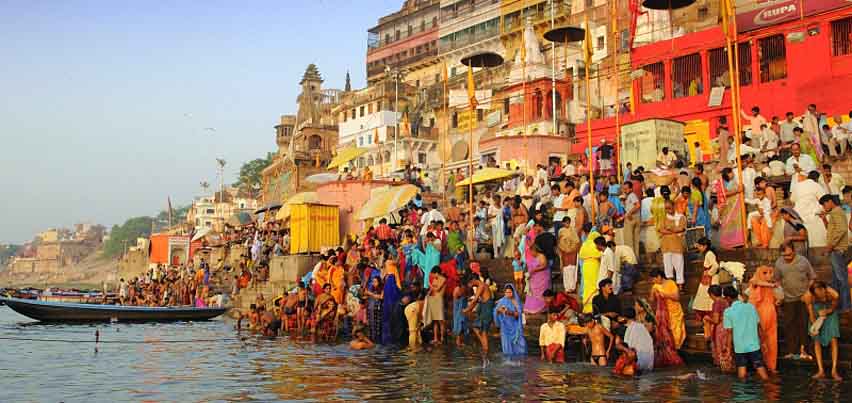Panchkroti travel is mostly done on the day of Shivratri. During the whole visit you are mostly seen by Shiv Mandirs. Travelers start the journey either by the Manikarnika Kund at evening, or by starting the journey around eighty hours from midnight to midnight. Each person completes this journey in 1, 3 or 5 days according to its ability to walk. This journey can also be done in Purushottam month. According to Hindu calendar or almanac, it is also called malmass or more month, which comes every 2-3 years. My argument says, because, if it is more month then this journey can also be auspicious time. This can be done in the Hindu calendar also in Phalguna, Vaishakha and Chaitra months. I believe that, if you are ready yourself, then you can do any pilgrimage anytime.
Way to go on a Panchkrishi journey
The Panchkrotri Yatra starts from Manikarnika Kund. It is a small reservoir situated near the famous Manikarnika Ghat. It is said that this Kund is also ancient from Ganga flowing in Varanasi. Anecdotes, it has been described as important for the three religions of Hinduism, connecting this Kund with Shiva, Shakti and Vishnu.Devotees take a plunge in this trunk and take a pledge to take their water in Anjali. It is a promise to complete the journey in a way. If you have any desire, then this is the best time to wish for its fulfillment. And after your desire is complete, you have to come here again on the forehead. In the Manikarnika Kund, the resolution takes place from the devotee boat towards the eighty Ghat, which is located in the Varanasi towards the southern region of the Ganges. This is the real beginning of the journey. After this you have to go through 5 halves, which is 50 miles or about 80 km. Is located on the route. This route of Panchkrishi Yatra is a very ancient route of pilgrimage. On this route, you will see a number of notice platters who will guide you in this entire journey and inform you of these hikes.
The distance between each halt
Manikarnika to Kardeshwar - 3 Kos Bhim Chandi from Kardeshwar - 5 cos i.e. total 8 kos Rameshwar from Bhim Chandi - 7 cos i.e. total 15 kos Shivpur from Rameshwar - 4 cos i.e. total 19 kos Kapiladhara from Shivpura - 3 cos i.e. total 22 kos Kapiladhara to Manikarnika - 3 cos i.e. total 25 kos 1 cos = 3.2 kms During this visit you see your right and many small temples, most of which are of red color. These temples, which are of different colors and sizes, have gone through different modes of time and have undergone amendment and beautification. You will get the mention of the names and their number of these temples after reading the information leases found on the way.
5 stops of Panchkrishi Yatra
These 5 stops are actually 5 temples, which are important places of this journey.There is also a system of Dharamshalas where the passengers can stay for rest. These shrines are capable of providing their own umbrella to approximately 25,000 people.These places are available for pilgrims free. All you have to do is arrange your food.Traditionally there was no concept of hotel or restaurant in India, so travelers used to eat their food themselves. From my grandmother, I have heard that when they used to visit such trips, they used to carry all the things they needed and when they stopped to rest at night, they used to cook their food themselves. This 5th halt at regular intervals would have been made to accommodate travelers, to rest and worship God. These five temples have a big water reservoir, which can bear the needs of the devotees who come in large numbers for visually. To offer these five halves, the pilgrims carry the Pan-Supari with them. In every temple that is available in the way, the raw rice is offered to Akshath or God. Every temple on the path of Panchkrishi Yatra has been numbered, on which basis you can easily move on.

